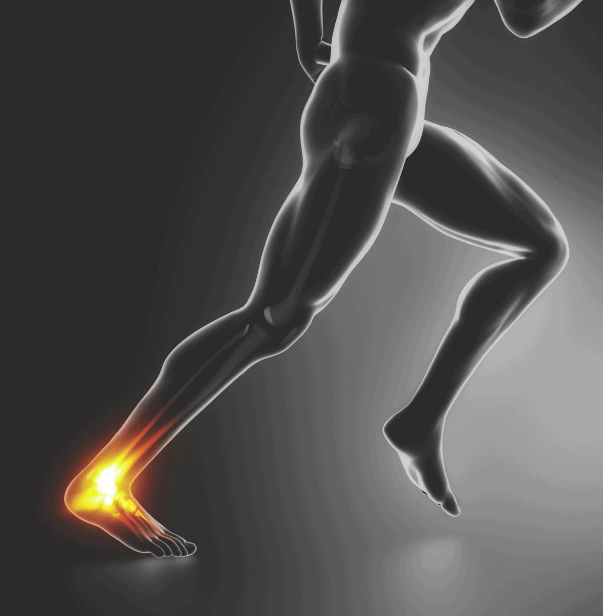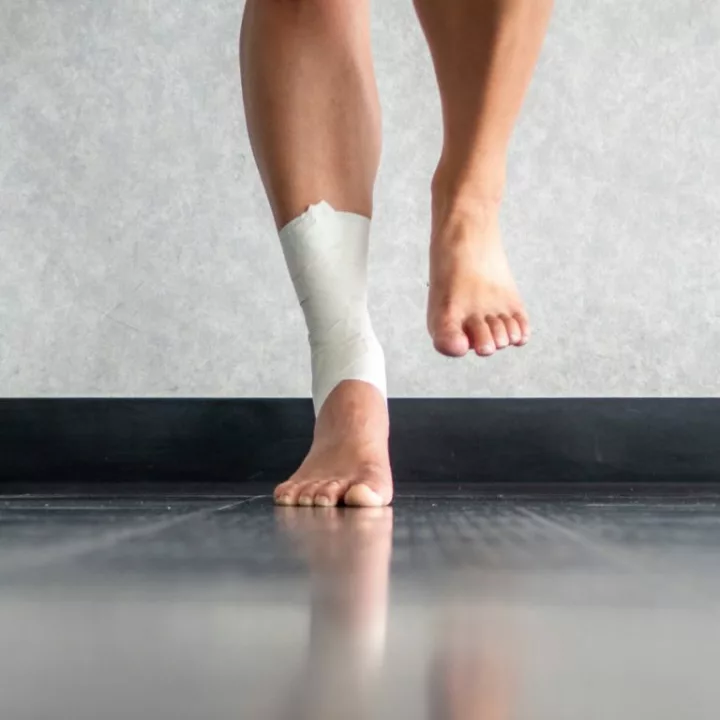Physical Therapist Dr. Sarah Whiteside explains why an ankle sprain should not be ignored and should be treated by a medical professional.
Have you ever suffered from an ankle sprain? A healed ankle sprain could need further rehabilitation, even if it no longer impairs daily function. Without proper healing of the ankle, you can put yourself at risk for an overuse injury of the foot. Worse, ankle sprains can lead to knee, anterior cruciate ligament (ACL), or meniscus tears.
When it comes to ankle injuries, an ankle sprain is one of the most common ones. Whether you have experienced it personally or known someone who has, you know how painful and debilitating it can be. An ankle sprain occurs when the ligaments that connect the ankle bones are stretched or torn due to a sudden twist or turn of the foot. This injury can happen during sports activities, walking on uneven surfaces, or simply tripping along the way.
When you suffer from an ankle sprain, it’s important to understand that the healing process goes beyond just reducing immediate pain and inflammation. Even after the pain subsides and you can walk without limping, your ankle may still need attention and additional rehabilitation.
Ankle sprain recovery
Proper rehabilitation after an ankle sprain aims to strengthen the muscles surrounding the ankle, improve balance and stability, and restore full ankle function. This is achieved through a combination of physical therapy, specific exercises, and strengthening techniques.
One key aspect of ankle sprain rehabilitation is strengthening the weakened muscles and ligaments. The initial healing process involves rest, ice, compression, and elevation (RICE). However, once the acute phase has passed, it’s important to begin working on active ankle recovery.
Ankle strengthening exercises may include movements such as heel raises, foot flexion and extension, resistance exercises with elastic bands, and balance exercises on unstable surfaces. These exercises help strengthen the ankle muscles and improve stability, reducing the risk of future ankle sprains.
In addition to strengthening, mobility and flexibility are also important considerations during ankle sprain rehabilitation. Gentle and controlled stretching of the ankle muscles and ligaments can help improve range of motion and prevent stiffness.
In more severe cases of ankle sprain, where there is significant ligament injury, a more intensive rehabilitation approach may be required. This may include manual therapy performed by a physical therapist or even surgical interventions in extreme cases.
It is crucial to remember that each person and each ankle sprain is unique. Therefore, the rehabilitation approach and the time required for full recovery may vary. It’s important to work closely with a healthcare professional, such as a physical therapist, to develop a personalized rehabilitation plan that suits your specific needs.
In summary, an ankle sprain can be a painful and debilitating injury. Even if you feel that you have regained functionality in your ankle, it is essential to seek proper care and rehabilitation to ensure complete recovery and prevent future injuries. Ankle strength, stability, and mobility are crucial aspects to work on during rehabilitation. Remember that patience, consistency, and collaboration with qualified healthcare professionals are key to successful recovery. Do not hesitate to seek medical help if you experience persistent pain or significant difficulties following an ankle sprain.
This article reminded me how frequently I evaluate patients with low back pain or lower extremity injuries. Especially those who have had prior or concurrent ankle sprains.
If you are wondering how to know if your sprained ankle is healed, here are the 5 signs you haven’t fully recovered from an ankle sprain:
- Limited ankle dorsiflexion range of motion
- Unable to hop on 1 leg without pain
- Difficulty balancing on one leg
- Pain with running
- Your just not confident in your ankle – with stairs, running and cutting
About the Proprioceptive Sensors in Your Ankle
There are multiple sensory nerve endings inside each of our joints. Many of these sensors are called “proprioceptive sensors.”
Proprioceptive sensors give our brains moment-to-moment feedback on joint angles, and inform us where our body is positioned with movement.
The ankle is a complex joint with multiple planes of movement and there are hundreds of these sensors that keep us balanced.
After an injury, these sensors are inhibited and proprioception is usually lost. These sensors won’t fully recover unless it’s purposefully trained and challenged. At Physio Logic, our physical therapists can help re-train motor control for safe function, running, jumping, and sport-specific training.
When Should I See a Physical Therapist for an Ankle Sprain?
Did you know you can see a physical therapist for an evaluation before seeing medical doctor? In New York State patients are eligible for “Direct Access” to Physical Therapy. This means you can come in for physical therapy treatment up to four weeks.
After that, by law, patients will need a script from a medical doctor. Direct Access gives you the advantage of getting a head start on physical rehabilitation before a condition becomes chronic.
Our physical therapists will be able to make a diagnosis on the first visit. From there, our team can assess whether to refer you to medical doctor immediately or after four weeks.
This is great news because you can get your injury treated right away, instead of waiting to get into a busy doctor’s office.
If you or a family member has suffered an ankle injury, schedule your appointment and get evaluated right away!
Contact us today to schedule your appointment and take the first step toward a healthier you with Physiologic NYC

